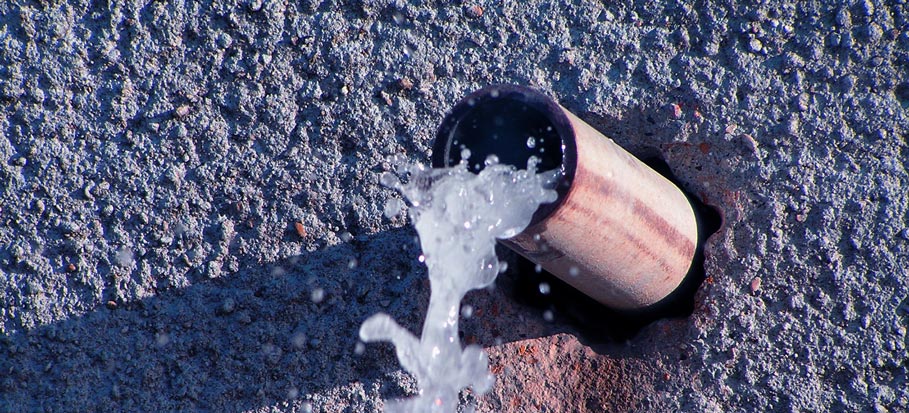How to Find and Repair Water Leaks-- A Comprehensive Overview
How to Find and Repair Water Leaks-- A Comprehensive Overview
Blog Article
The article following next in relation to Detecting hidden plumbing leaks is truly remarkable. Don't miss it.

Early discovery of leaking water lines can minimize a possible calamity. Aside from saving you money, it will certainly minimize the worry and stress. The minute you discover a leak, calling your plumber for repairs is the very best service. Nonetheless, some small water leaks might not show up. If you can not find it with your nude eyes, below are some hacks that help.
1. Analyze the Water Meter
Every house has a water meter. Inspecting it is a surefire manner in which assists you find leaks. For starters, shut off all the water resources. Guarantee no person will purge, use the tap, shower, run the cleaning equipment or dishwashing machine. From there, go to the meter and watch if it will certainly transform. Considering that no person is using it, there should be no movements. If it relocates, that suggests a fast-moving leakage. Furthermore, if you discover no changes, wait a hr or two as well as inspect back once more. This indicates you may have a sluggish leak that could even be underground.
2. Examine Water Consumption
If you find sudden modifications, regardless of your intake being the exact same, it means that you have leaks in your plumbing system. An abrupt spike in your costs shows a fast-moving leakage.
Meanwhile, a consistent rise each month, even with the very same behaviors, shows you have a sluggish leakage that's likewise gradually intensifying. Call a plumber to extensively inspect your property, specifically if you really feel a warm location on your flooring with piping beneath.
3. Do a Food Coloring Test
When it comes to water usage, 30% comes from commodes. If the shade in some way infiltrates your bowl throughout that time without flushing, there's a leak between the tank and bowl.
4. Asses Outside Lines
Don't neglect to inspect your exterior water lines also. Test faucets by affixing a garden pipe. Should water permeate out of the link, you have a loose rubber gasket. Change this as well as ensure all links are tight. If you've got an automatic sprinkler, it will certainly aid get it professionally took a look at and also kept annually. One little leakage can throw away lots of water and also increase your water expense.
5. Assess the circumstance as well as inspect
House owners need to make it a routine to examine under the sink counters and also also inside closets for any kind of bad odor or mold and mildew growth. These two red flags indicate a leak so timely focus is called for. Doing regular assessments, also bi-annually, can save you from a significant trouble.
Much more notably, if you know your residence is currently old, maintain a watchful eye on your heating units, hose pipes, pipes etc. Look for stainings as well as deteriorating as many pipelines and devices have a life expectancy. They will also normally degrade because of wear and tear. Do not wait for it to escalate if you presume dripping water lines in your plumbing system. Call a specialist plumber right away so you don't wind up with a terrible mess in your house.
Early detection of dripping water lines can minimize a prospective disaster. Some little water leaks might not be visible. Checking it is a proven way that aids you discover leakages. One little leak can throw away lots of water and surge your water bill.
If you believe leaking water lines in your plumbing system, don't wait for it to rise.
WARNING SIGNS OF WATER LEAKAGE BEHIND THE WALL
PERSISTENT MUSTY ODORS
As water slowly drips from a leaky pipe inside the wall, flooring and sheetrock stay damp and develop an odor similar to wet cardboard. It generates a musty smell that can help you find hidden leaks.
MOLD IN UNUSUAL AREAS
Mold usually grows in wet areas like kitchens, baths and laundry rooms. If you spot the stuff on walls or baseboards in other rooms of the house, it’s a good indicator of undetected water leaks.
STAINS THAT GROW
When mold thrives around a leaky pipe, it sometimes takes hold on the inside surface of the affected wall. A growing stain on otherwise clean sheetrock is often your sign of a hidden plumbing problem.
PEELING OR BUBBLING WALLPAPER / PAINT
This clue is easy to miss in rooms that don’t get much use. When you see wallpaper separating along seams or paint bubbling or flaking off the wall, blame sheetrock that stays wet because of an undetected leak.
BUCKLED CEILINGS AND STAINED FLOORS
If ceilings or floors in bathrooms, kitchens or laundry areas develop structural problems, don’t rule out constant damp inside the walls. Wet sheetrock can affect adjacent framing, flooring and ceilings.
https://www.servicemasterbyzaba.com/blog/how-to-detect-water-leakage-in-walls/

Hopefully you liked our article about Leaking water lines. Thank you for taking the time to browse our blog post. Do you know another individual who is excited about Hacks to detect leaks? Be sure share it. We thank you for reading our article about Finding hidden leaks.
Report this page